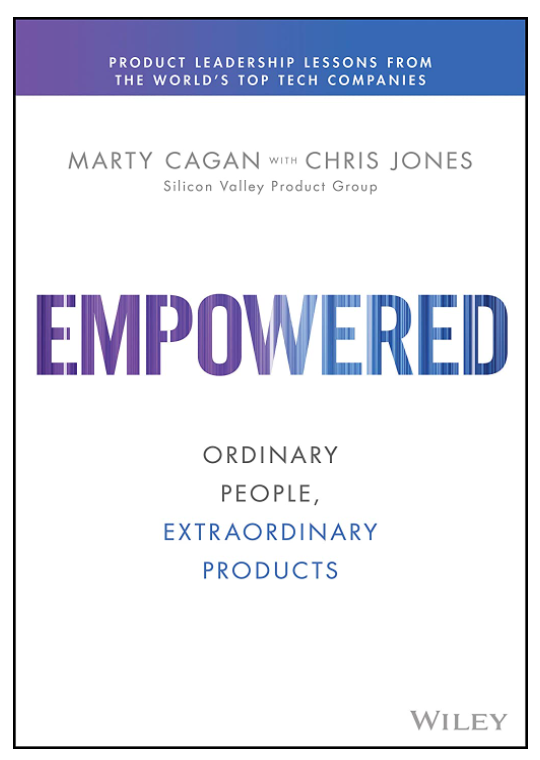In the world of technology, where innovation is not just welcomed but expected, Marty Cagan’s “Empowered: Unveiling the Secrets to Building Thriving Tech Products” emerges as a beacon for those in pursuit of excellence. Let’s embark on a journey through this book review where I will try my best to dissect its wisdom, and narrate how it proposes to transform tech product management.
Introduction
Innovation breathes life into the tech industry, keeping it vibrant and ever-evolving. Among the champions of this cause is Marty Cagan, whose insights into product management have influenced many (Including me). His endeavor, “Empowered,” aims to arm product teams with strategies, wisdom, and inspiration to navigate the ever-complex landscape of tech product development.
Chapter Analysis: Breaking Down ‘Empowered’
Defining the Role of Product Teams
Cagan redefines the essence of product teams, emphasizing their critical roles and responsibilities which diverge dramatically from the traditional models. He paints a picture where efficiency and innovation are not just goals but the very fabric of a team’s operations.
- Comparison to traditional models: When juxtaposed with conventional frameworks, Cagan’s vision for product teams stands out for its forward-thinking approach.
- The impact on efficiency and innovation: By embracing this evolved role, teams can unlock a higher degree of creativity and productivity.
The Importance of Leadership in Product Management
Leadership takes the spotlight in Cagan’s narrative, demarcated from mere management. Effective leaders in the tech realm share a host of qualities which Cagan outlines, alongside offering guidance on nurturing these leadership attributes within.
- Leadership versus management in product teams: A critical analysis is provided on how distinct these two realms are, and why leadership is paramount.
- How “Empowered” proposes to foster leadership qualities: Through anecdotes and insights, Cagan lays out a blueprint for developing true leaders within tech teams.
Embracing a Customer-Centric Approach
At the core of Cagan’s philosophy is the customer. He champions a customer-centric methodology, leveraging feedback and deep understanding to steer product development.
- Techniques for understanding customer needs: Cagan does not just preach customer focus; he provides tangible strategies and techniques for integrating customer feedback into the product lifecycle.
- Case studies and examples: Real-world success stories bolster the argument for a customer-centric approach, illustrating its efficacy.
Key Themes and Messages
Empowerment and Autonomy
Cagan believes in empowering product teams, granting them autonomy while ensuring accountability. This section explores the delicate balance and the positive ramifications of such empowerment.
- Strategies for fostering autonomy: Practical steps and strategies to grant teams more freedom are discussed.
- Real-world implications: Success stories and examples underline the benefits of an empowered product team.
Navigating Failure and Learning from It
Failure is not a setback but a step forward, in Cagan’s eyes. He advocates for a culture where failure is a catalyst for growth, endorsing a mindset where risks are taken, and lessons are learned.
- The balance between risk-taking and prudent decision-making: Navigating the precarious journey of innovation involves calculated risks, Cagan notes, offering insights into maintaining this balance.
- Encouraging a culture of experimentation and learning: He encourages an environment where experimentation is celebrated and failures are viewed as learning opportunities.
The Future of Product Management
With an eye on what lies ahead, Cagan discusses upcoming trends in the tech industry and how “Empowered” readies its readers to meet these challenges head-on.
- Predictions and trends in the tech industry: A glimpse into the future, guided by Cagan’s expertise.
- Aligning product strategy with future technological shifts: Advice on staying ahead of the curve by anticipating and adapting to technological evolution.
Critical Perspectives
Strengths of “Empowered”
“Empowered” shines in its comprehensive take on product management, blending practical advice with inspiring real-world examples. It serves not just as a guide but as a source of inspiration for product teams and leaders looking to make their mark.
Potential Drawbacks
However, its specialization in the tech industry might limit its appeal across other sectors. The challenge of implementing Cagan’s recommendations in the face of organizational inertia or resistance could deter some.
Conclusion
“Empowered” by Marty Cagan stands as a seminal work in product management within the tech industry. It embodies the essence of innovation, leadership, and customer-centricity. Marty Cagan’s vision is not just about building products but about nurturing ecosystems that thrive on empowerment and learning.
FAQs
Who should read “Empowered”?
“Empowered” is essential reading for product managers, leaders in the tech industry, and anyone passionate about innovation and product development.
How does “Empowered” differ from Cagan’s previous work, “Inspired”?
While “Inspired” laid the groundwork for thinking about modern product management, “Empowered” takes a deeper dive into building and guiding empowered product teams.
Can the principles in “Empowered” be applied to startups as well as established companies?
Absolutely. Cagan’s principles are versatile and can catalyze growth and innovation in both startups and established tech companies.
What are some practical steps to start implementing Cagan’s advice?
Start by fostering a culture that values customer feedback, encourages risk-taking, and supports autonomous decision-making within product teams.
How does “Empowered” address the challenge of scaling product teams?
By emphasizing the importance of leadership and a strong, customer-centric foundation, Cagan offers strategies to scale product teams effectively while maintaining their original ethos and agility.
Here is the Amazon.com link to the book.



